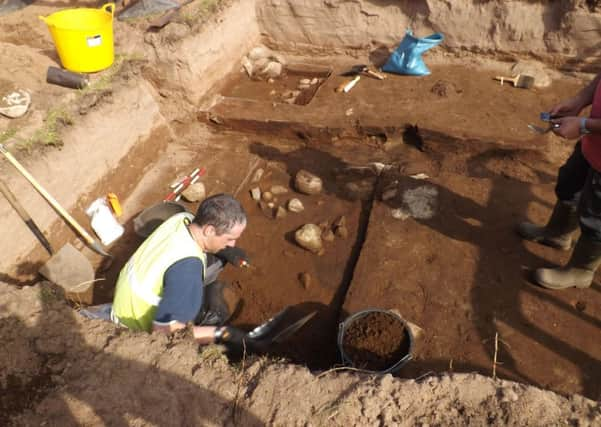Bronze Age pottery found on Isle of Lewis


More than 100 fragments of pottery thought to date from around 2000 BC were found during recent work at Point Braighe, just outside Stornoway.
Scottish Water was installing a new water main and had called in archaeologists from Fife-based company Archas Limited to monitor excavations because the area was identified as one likely to produce archaeological remains or deposits.
Advertisement
Hide AdA saddle quern, normally used for grinding wheat, was the first discovery, with many more artefacts soon unearthed.
Lead archaeologist Alastair Rees believes the large quantities of pottery as well as evidence of burning, quartz and stone tools and a lack of domestic waste such as animal bone or shellfish remains might suggest that the area served as a type of processing site, although it is not clear what was being produced.
What is clear, however, is that the site is probably part of a much more extensive settlement, he said.
“It wasn’t so much what we were finding but what we weren’t finding. We have found a lot of pottery and evidence of repeated peat fires but we have not been finding much in the way of domestic refuse - bone, shell and waste material from domestic occupation,” he said.
“We initially thought we were looking at a standard round building, but the more we excavated and the more we cleaned up, the more we discovered it was a spread of material - more like a processing area rather than an actual structure.
“There was no residue on the quern, so we aren’t sure what they were grinding - it might be they were grinding something else. The type of stone was quite fragile and my feeling is that if they were grinding wheat on it then it wouldn’t be very nice to eat bread with the flour made from it because it would be full of fragments. It would be like eating a sandwich with a teaspoon full of sand in it.
Advertisement
Hide Ad“It could be the quern was used in processing something other than wheat which would tie in with the other findings we have made.”
The pieces, found over the last three to four weeks, were also initially thought to date from the Iron Age but, as more pottery was discovered, specialists found them to be much older.
Advertisement
Hide AdThe excavation is continuing and archaeologists hope more items can be found.
Mr Rees added: “It’s always exciting to find something like this, something unexpected and something which has quite an unusual story. What’s exciting is that we have got this little area which is potentially part of a much bigger settlement. There’s potential for some interesting discoveries.”
SEE ALSO